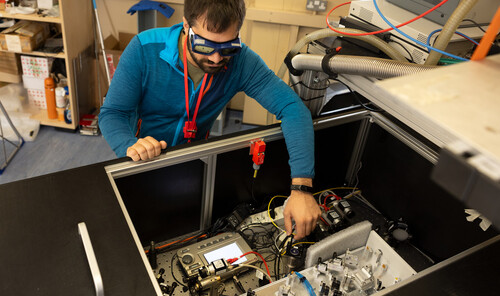Status of the experiment
From 2013 onward, the FAMU team conducted four successful data collection sessions at the RIKEN-RAL facility, affirming the viability of the proposed method. During this session the characteristics of the muon beam, the X-rays detection system, the gas target and gas mixture were tested and improved.From 2023 FAMU is taking data in its full configuration, including the laser system, for the measurement of the hyperfine splitting of the muonic hydrogen.
The main characteristics of the experiment are described in the following
The FAMU Method

The hyperfine splitting is measured with an indirect method. First muonic hydrogen is formed by shooting a muon beam of about 55 MeV/c on the gas target. The target contains hydrogen gas with a small amout of oxygen. Then, a powerful laser with variable energy is injected in the target; the laser energy is varied to match the appropriate energy and induce the transition. The variation of the spectrum of the X-rays emitted by the oxygen gas target, as the laser energy changes, allows to determine the energy of the splitting.
Beam at Riken RAL

The FAMU experiment is located at the RIKEN-RAL muon facility at the ISIS accelerator of the Rutherford Appleton Laboratory (RAL) in the UK.
The facility can deliver up to e+05 negative muons per second. The muon beam has a double pulse structure and a repetition rate of 50 Hz. The momentum can be tuned in the range 30-80 MeV/c.
The facility can deliver up to e+05 negative muons per second. The muon beam has a double pulse structure and a repetition rate of 50 Hz. The momentum can be tuned in the range 30-80 MeV/c.
Target

The first target

Laser


Scheme of the FAMU laser system
Detectors


